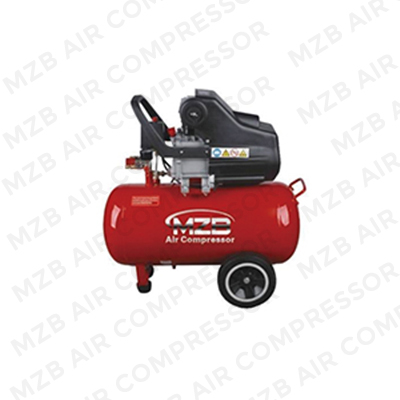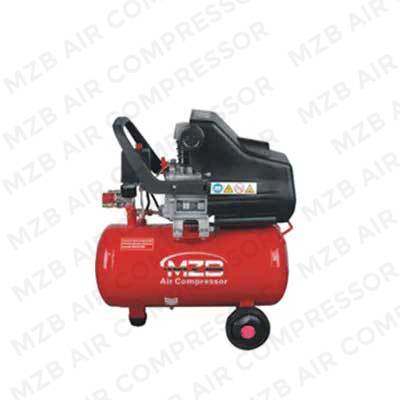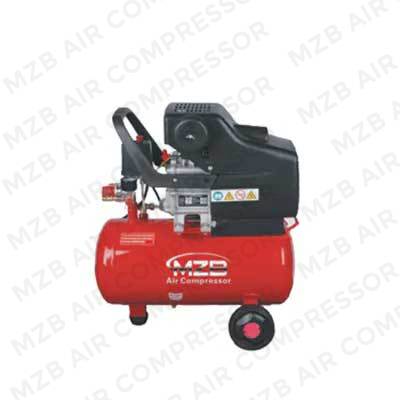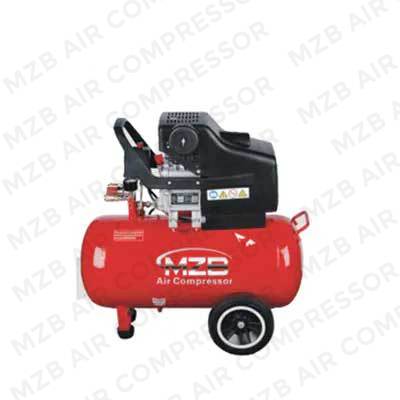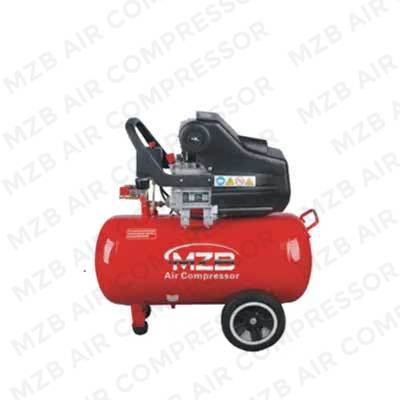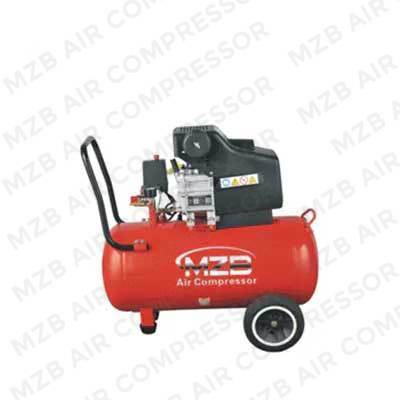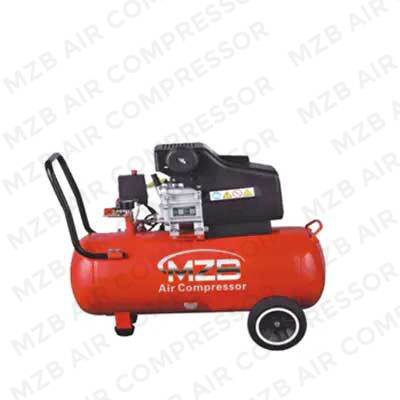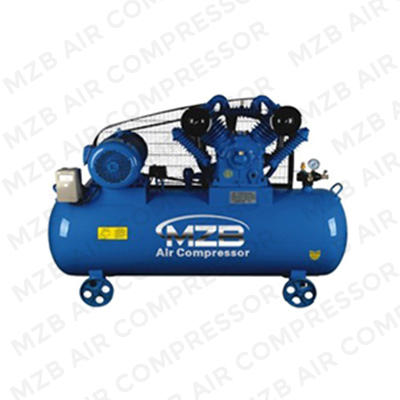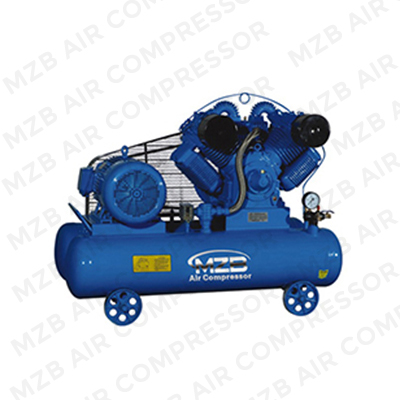The working principle of the air compressor: After the driver is started, the crankshaft of the compressor is driven to rotate by the triangle tape, and is converted into the piston to reciprocate in the cylinder through the crank rod mechanism. When the piston moves from the cover side to the shaft, the cylinder volume increases, the pressure in the cylinder is lower than the atmospheric pressure, the outside air enters the cylinder through the filter and the suction valve; after reaching the bottom dead center, the piston moves from the shaft side to the cover side , the suction valve is closed, the cylinder volume gradually becomes smaller, the air in the cylinder is compressed, and the pressure rises. When the pressure reaches a certain value, the exhaust valve is opened, and the compressed air enters the air storage tank through the pipeline. work,
Continuously deliver compressed air to the air storage tank, so that the pressure in the tank gradually increases, so as to obtain the required compressed air.
The detailed process of the working principle of the air compressor.
Inhalation process:
The suction port on the intake side of the screw type must be designed so that the compression chamber can fully inhale, while the screw compressor does not have an intake and exhaust valve group, and the intake air is only regulated by the opening and closing of a regulating valve. When the rotor rotates, the tooth groove space of the main and auxiliary rotors is the largest when it turns to the opening of the inlet end wall. At this time, the tooth groove space of the rotor is communicated with the free air of the air inlet. It is completely exhausted. When the exhaust is completed, the tooth groove is in a vacuum state. When it is turned to the air inlet, the outside air is sucked in and flows into the tooth groove of the main and auxiliary rotors in the axial direction. When the air fills the entire tooth groove, the end face of the intake side of the rotor turns away from the air inlet of the casing, and the air between the tooth grooves is closed. The above is, [air intake process]. 4.2 Sealing and conveying process: When the suction of the main and auxiliary rotors ends, the tooth peaks of the main and auxiliary rotors are closed with the casing. At this time, the air is closed in the tooth groove and no longer flows out, that is, [sealing process]. The two rotors continue to rotate, their tooth peaks and tooth grooves match at the suction end, and the matching surface gradually moves to the discharge end, which is the [transport process]. 4.3 Compression and fuel injection process: During the conveying process, the meshing surface gradually moves to the exhaust end, that is, the gap between the meshing surface and the exhaust port gradually decreases, the gas in the tooth groove is gradually compressed, and the pressure increases. This is the [compression process]. At the same time of compression, the lubricating oil is also sprayed into the compression chamber to mix with the air due to the effect of the pressure difference.
Exhaust process:
When the meshing end face of the rotor turns to communicate with the exhaust of the casing, (at this time the compressed gas pressure is the highest) the compressed gas starts to be discharged, until the meshing surface between the tooth crest and the tooth groove moves to the exhaust end face, at which time the two rotors mesh The groove space between the surface and the exhaust port of the casing is zero, that is, the exhaust process is completed. At the same time, the length of the groove between the rotor meshing surface and the air inlet of the casing reaches the longest, and the suction process is again in progress.
3. Compression and fuel injection process:
During the conveying process, the meshing surface gradually moves to the exhaust end, that is, the gap between the meshing surface and the exhaust port gradually decreases, the gas in the tooth groove is gradually compressed, and the pressure increases, which is the [compression process]. At the same time of compression, the lubricating oil is also injected into the compression chamber and mixed with the chamber air due to the action of the pressure difference.
4. Exhaust process:
When the meshing end face of the rotor turns to communicate with the exhaust of the casing, (at this time the pressure of the compressed gas is the highest) the compressed gas begins to be discharged, until the meshing face of the tooth crest and the tooth groove moves to the exhaust end face, at this time the two rotors The tooth groove space between the meshing surface and the casing exhaust port is zero, that is, the exhaust process is completed. At the same time, the length of the tooth groove between the rotor meshing surface and the air inlet of the casing reaches the longest, and the suction process is completed. in progress again.

 English
English Español
Español русский
русский